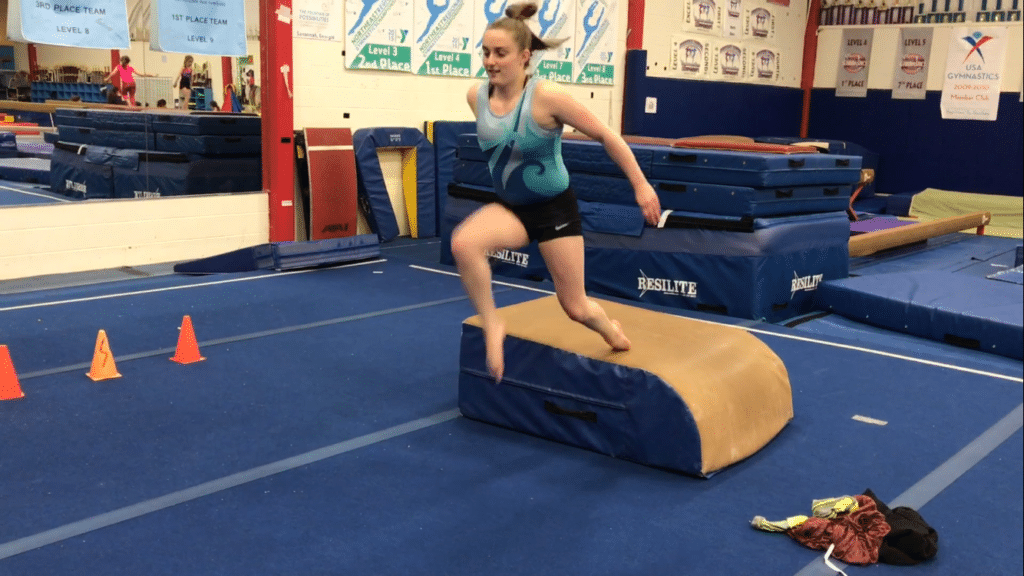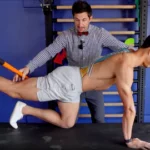Gymnastics is a sport that demands exceptional strength, flexibility, and control. Among the most important muscle groups for gymnasts are the legs, as they play a crucial role in jumps, landings, and overall performance. Whether you’re a gymnast or someone looking to improve your leg strength and flexibility, incorporating gymnastic leg exercises into your routine can be transformative.
In this article, we’ll explore the best gymnastic leg exercises, their benefits, and how to incorporate them into your fitness routine. Let’s dive in!
Why Are Strong Legs Important in Gymnastics?
Strong legs are the foundation of many gymnastic movements, including:
- Jumps and Leaps: Powerful legs help gymnasts achieve height and distance in jumps.
- Landings: Strong leg muscles absorb impact and reduce the risk of injury.
- Balance and Stability: Leg strength improves balance, which is essential for routines on the beam and floor.
- Flexibility: Flexible legs allow for a greater range of motion, enhancing performance in splits, kicks, and other movements.
Top Gymnastic Leg Exercises
Here’s a list of effective gymnastic leg exercises that target strength, flexibility, and endurance.
1. Squat Variations
Squats are a staple for building leg strength. Gymnasts can benefit from these variations:
- Bodyweight Squats: Perfect for beginners to build foundational strength.
- Pistol Squats: A single-leg squat that improves balance and strength.
- Jump Squats: Add explosiveness to your routine by incorporating jumps.
How to Perform a Jump Squat:
- Stand with feet shoulder-width apart.
- Lower into a squat position.
- Explode upward, jumping as high as possible.
- Land softly and repeat.
2. Lunges
Lunges are excellent for targeting the quads, hamstrings, and glutes.
- Forward Lunges: Step forward and lower your body until both knees form 90-degree angles.
- Reverse Lunges: Step backward instead of forward for a variation.
- Side Lunges: Step to the side to target the inner thighs.
3. Calf Raises
Calf raises strengthen the lower legs, which are essential for jumps and landings.
- Basic Calf Raises: Stand on your toes and lower back down.
- Single-Leg Calf Raises: Perform the exercise on one leg for added difficulty.
- Weighted Calf Raises: Hold weights to increase resistance.
4. Plyometric Box Jumps
Box jumps are a plyometric exercise that builds explosive power.
How to Perform:
- Stand in front of a sturdy box or platform.
- Jump onto the box, landing softly with both feet.
- Step down and repeat.
5. Hamstring Curls
Hamstring curls target the back of the legs and improve flexibility.
- Use a resistance band or gym equipment for this exercise.
- Lie on your stomach and curl your legs toward your glutes.
6. Splits Training
Flexibility is key in gymnastics, and splits are a fundamental skill.
- Practice front splits and side splits daily.
- Use yoga blocks for support if you’re a beginner.
7. Wall Sits
Wall sits are an isometric exercise that builds endurance in the quads.
How to Perform:
- Stand with your back against a wall.
- Slide down until your knees are at a 90-degree angle.
- Hold the position for as long as possible.
Sample Gymnastic Leg Workout Routine
Here’s a sample routine you can follow to strengthen your legs:
| Exercise | Reps/Sets | Rest |
|---|---|---|
| Bodyweight Squats | 3 sets of 15 reps | 30 seconds |
| Forward Lunges | 3 sets of 12 reps/leg | 30 seconds |
| Calf Raises | 3 sets of 20 reps | 20 seconds |
| Plyometric Box Jumps | 3 sets of 10 reps | 1 minute |
| Wall Sits | 3 sets of 30 seconds | 30 seconds |
| Splits Training | Hold for 1 minute/leg | No rest |
Tips for Maximizing Results
To get the most out of your gymnastic leg exercises, keep these tips in mind:
- Warm Up Properly: Always start with a dynamic warm-up to prevent injuries.
- Focus on Form: Proper technique is crucial for effectiveness and safety.
- Progress Gradually: Increase intensity, reps, or resistance over time.
- Incorporate Stretching: Stretch after your workout to improve flexibility.
- Stay Consistent: Regular practice is key to seeing results.
Common Mistakes to Avoid
Avoid these common mistakes when performing gymnastic leg exercises:
- Skipping Warm-Ups: This increases the risk of injury.
- Overtraining: Rest days are essential for recovery and muscle growth.
- Neglecting Flexibility: Strength without flexibility can limit performance.
- Using Improper Form: Poor technique can lead to injuries.
Benefits of Gymnastic Leg Exercises
Incorporating these exercises into your routine offers numerous benefits:
- Improved Strength: Build powerful leg muscles for better performance.
- Enhanced Flexibility: Achieve a greater range of motion.
- Injury Prevention: Strengthen muscles and joints to reduce the risk of injuries.
- Better Balance: Develop stability for complex gymnastic movements.
- Explosive Power: Boost your ability to jump higher and land safely.
How to Incorporate Gymnastic Leg Exercises into Your Routine
Here are some ways to include these exercises in your fitness plan:
- Beginner: Start with bodyweight exercises like squats and lunges.
- Intermediate: Add resistance bands or light weights for more challenge.
- Advanced: Incorporate plyometric exercises like box jumps and pistol squats.
For more fitness tips and workout routines, check out our website at turbotechify.com.
Conclusion
Gymnastic leg exercises are a fantastic way to build strength, flexibility, and power. Whether you’re a gymnast or simply looking to improve your fitness, these exercises can help you achieve your goals. Remember to focus on proper form, stay consistent, and gradually increase the intensity of your workouts.
Ready to take your fitness to the next level? Explore more workout tips and guides on turbotechify.com!


